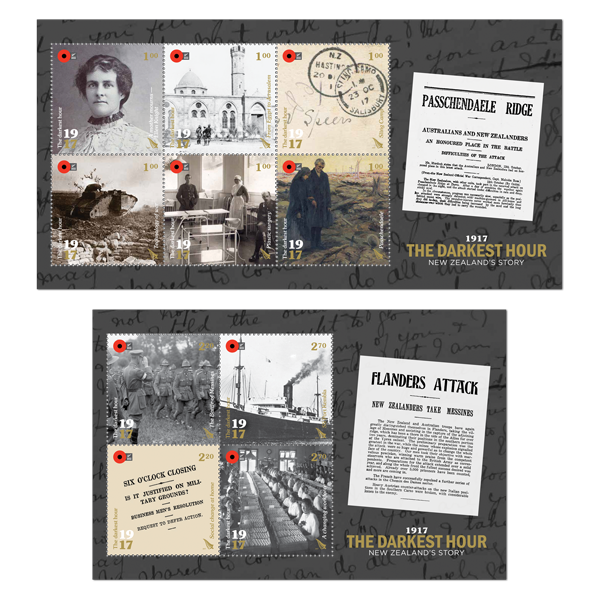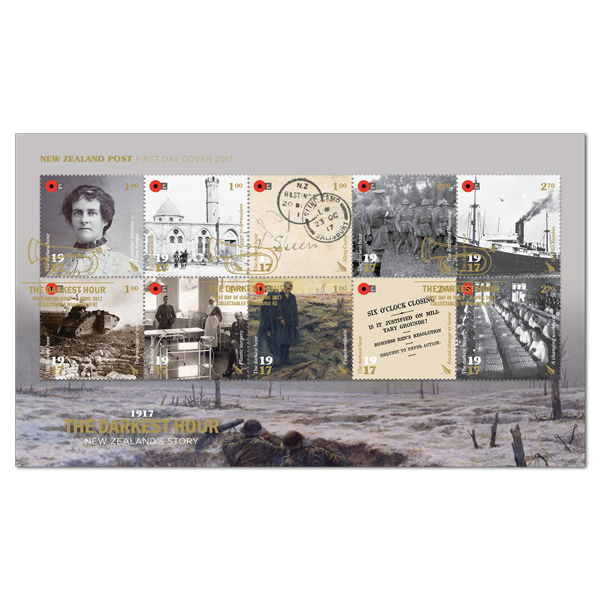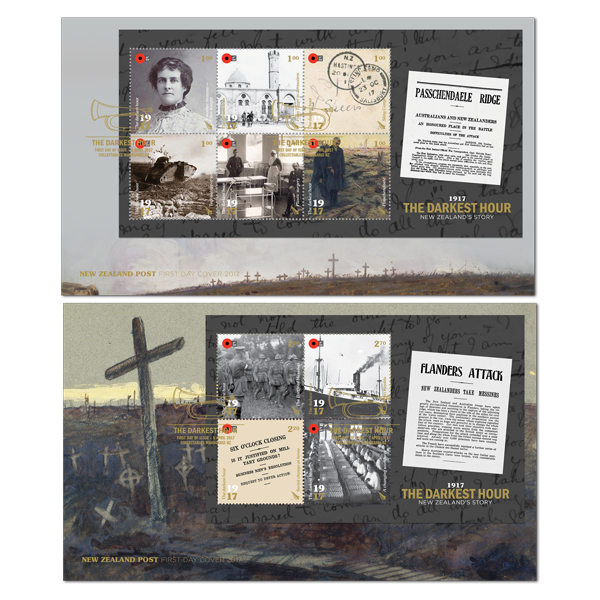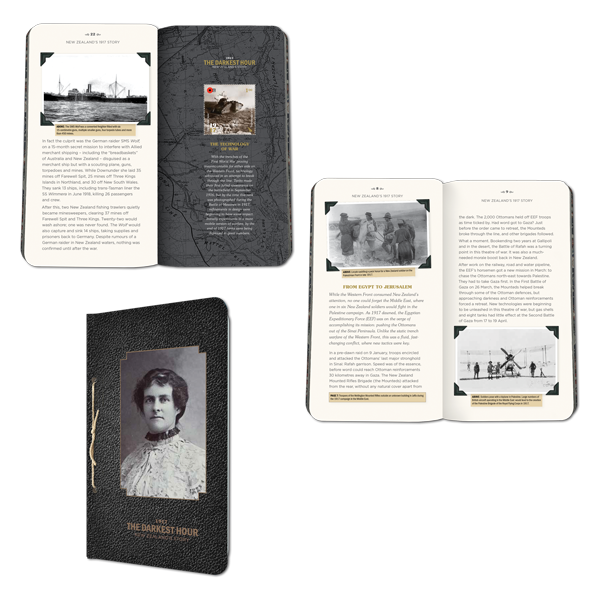By 1917, soldiers and loved ones had begun to lose faith in the ongoing war. Those on the Western Front were living in cold, wet trenches, and those at home were doing what they could to keep the home fires burning. New Zealand would experience the deadliest day in its military history when 845 lives were lost at the Belgian town of Passchendaele.
Issue information
As the war continued its persistent trudge into 1917, New Zealanders began to grow weary of this Great War that seemed to have no end in sight. Those on the Western Front were living in cold, wet trenches, and would experience the deadliest day in New Zealand’s military history when 845 lives were lost at the Belgian town of Passchendaele.
Alongside the horrors of the Western Front, we told the story of mother of ten Ellen Knight. Like many mothers, wives, sisters and daughters she experienced the war from New Zealand shores, relying on letters from loved ones and news reports to stay informed. However, Ellen’s story was grimmer than most – she had lost three sons by the war’s end.
First Day Cover
All ten stamps were available on a collectable first day cover as a part of this issue. The design featured a war painting titled Observation Post, Winter by William Barnes Wollen.
Miniature Sheets
The set of two miniature sheets in the issue featured letters from members of the Knight family written during the war – Ellen and her sons would write back and forth constantly in a bid to stay connected. The miniature sheet with four stamps featured a newspaper clipping reporting on the Battle of Messines, and the miniature sheet with six stamps featured a newspaper clipping reporting on Passchendaele.
Miniature Sheet First Day Covers
The two-miniature sheet first day covers featured paintings of landscapes from the First World War. The first day cover with four stamps featured The Battle of Polygon Wood by George Edmund Butler, and the first Day cover with six stamps featured Cemetery by Nugent Welch.
Commemorative Book
The story of Ellen Knight and New Zealand’s role in the First World War throughout 1917 was told in greater detail in the commemorative book. The book was the fourth in a series of five and expanded in depth on the story behind each stamp in this issue as well as supplying a more detailed glimpse of life during the War in 1917.
This commemorative book edition told the story of Ellen Knight and follows the paths of some of her children abroad and back home. Ellen’s son George tells of his time in Sling Camp in letters back to his mother describing it as “this other last place on earth”, he later writes to his mother to tell her he has been promoted to company commander after the Battle of Broodseinde. Sadly, the letters from all three sons came to an abrupt end as they cruelly fell victim to this terrible war. Ellen's daughter, meanwhile, had joined the workforce back home as had many women.
The emerging technology of war, the development of plastic surgery and the sinking of a supply ship in New Zealand waters were also explored and expanded on in this commemorative book. This unique collectable contained twelve miniature sheets that were not available individually.
The Ellen Knight Story
Ellen Knight, mother of ten, lived in Dannevirke, while husband Herbert helped their eldest son Douglas at his farm between Whakatāne and Ōpōtiki. Farm workers were exempt from going to war, but George and younger brother Herbert enlisted to do their bit and sailed in February 1915 for Egypt, then on to Gallipoli.
George regularly wrote to his mother, ensuring that he and his brother would stick together and come home safe. However, on 8 May 1915 the young, boisterous Herbert was shot dead by a sniper at Cape Helles after volunteering to bury a mule. George wrote to break the news, but Ellen had seen the casualty list before George’s letter arrived.
The light-hearted, lovable George had scares – surviving a shoulder wound, illnesses, a septic finger – before he was tragically shot dead at Passchendaele on New Zealand’s darkest day, 12 October 1917. Before the family found out about George’s tragic end, Ellen’s eldest son William sailed from Wellington, having been excused from the farm. On 1 September 1918 Douglas was killed during the Bancourt Ridge offensive, felled by a shell while returning with an arm wound.
Thankfully Ken, who turned 18 in 1917, was never called up, and took over Douglas’s farm. But daughter Margarette was struck by rheumatoid arthritis in 1918, and her mother became her care giver.
The next war also took its toll on Ellen and her remaining children. Her youngest, Maurice, died aged 36 while training troops in India in 1944. With her eyesight declining, she moved in with daughter Dorothy in Gisborne aged 87, then to a Whakatāne nursing home.
When Ellen died aged 93, her family found the shoebox full of letters. It’s through these letters and interviews with family members that Ellen’s story, and that of her children is told in 1917 The Darkest Hour.
Product Listing for 1917 The Darkest Hour
Technical information
| Date of issue: | 5 April 2017 |
|---|---|
| Number of stamps: | Ten gummed stamps |
| Denominations: | 6 x $1.00, 2 x $2.20, 2 x $2.70 |
| Designed by: | Strategy Design and Advertising, Wellington, New Zealand |
| Printer and process: | Southern Colour Print by offset lithography |
| Number of colours: | Four process colours |
| Stamp size and format: | 36.95mm x 37.5mm (horizontal) |
| Paper type: | Tullis Russell 104gsm red phosphor gummed stamp paper |
| Number of stamps per sheet: | 24 |
| Perforation gauge: | 14.4 x 14.62 |
| Special blocks: | Plate/imprint blocks could be obtained by purchasing at least six stamps from a sheet. Barcode blocks were available in A and B formats. |
| Period of sale: | These stamps remained on sale until 4 April 2018. First day covers remained on sale until 5 June 2017. |









